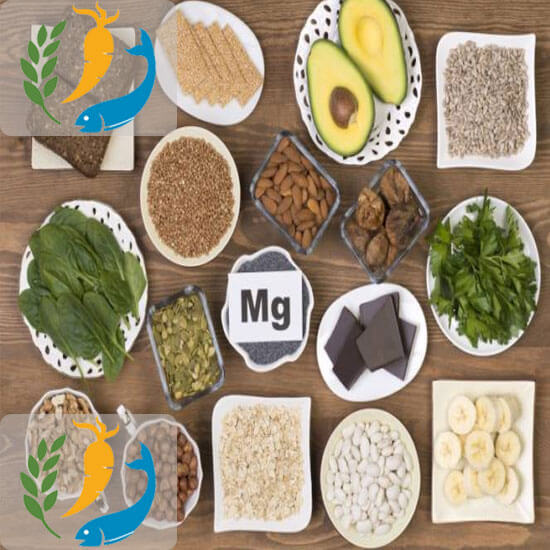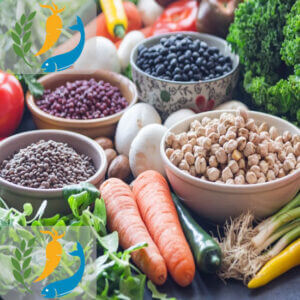What are the benefits of magnesium rich foods?Magnesium is one of the nutrients that cannot be ignored by adults. Magnesium helps more than 300 enzyme reactions in the body, and when deficient, it causes various symptoms.
This article has compiled information on magnesium necessary for the adults, such as symptoms when the elderly are deficient in magnesium, food intake guidelines, and foods with high content.
Also read nutritional benefits of grapes
Magnesium is essential for the health of the elderly! Estimated intake amount and recommended foods
About 25g of magnesium is present in the body, of which about 60% is in bones and teeth. When there is a shortage of magnesium in the blood or muscles, the magnesium stored in the bones is released to make up for the deficiency.
Calcium is famous as a nutrient that builds strong bones. It is still ideal for magnesium and calcium in a 1:2 balance because excessive calcium intake inhibits magnesium absorption.
Magnesium is an essential component of bone and helps more than 300 enzymatic reactions in the body. For example, energy production, muscle contraction, blood pressure regulation, thermoregulation, and nerve information transmission are involved in magnesium. Magnesium is also called an “anti-stress mineral” because it suppresses nerve excitement and causes irritation and depression if the body’s amount is not appropriate.
Magnesium Rich Foods
What happens when older people are deficient in magnesium
Magnesium deficiency occurs when intake is low, or excretion is high. Magnesium deficiency can lead to various symptoms that threaten the health of the elderly, so it is essential to take it properly from your daily diet.
A blood test is used to diagnose magnesium deficiency. Specifically, hypomagnesemia is diagnosed when the magnesium concentration in the blood is less than 1.8 mg/dl. Hypomagnesemia is associated with nausea, vomiting, drowsiness, weakness, muscle spasms (tetany), and appetite loss.
Also, if magnesium deficiency is prolonged, the possibility of the following diseases increases.
Osteoporosis
Magnesium is a mineral involved in bone and teeth formation, and long-term deficiency increases the risk of Osteoporosis.
Osteoporosis is a condition in which bone density decreases and bones become brittle. When it develops, it can cause fractures or become bedridden with a slight trip, which significantly threatens the lives of the elderly.
Even if you take a lot of calcium, you will not produce healthy bones if you lack magnesium. To prevent Osteoporosis, you should be aware of the 1: 2 balance between magnesium and calcium. Let’s do it.
Ischemic heart disease
Studies have shown that people who take a lot of magnesium have a lower risk of developing ischemic heart disease than those who carry less magnesium. Ischemic heart disease is a condition in which some heart parts do not get enough blood, and the heart muscle becomes oxygen deficient.
Ischemic heart disease is divided into angina and myocardial infarction. Angina is a condition in which the blood vessels to the heart muscle become narrower. Blood circulation temporarily worsens, causing chest pain, which improves in a few minutes to 10 minutes.
On the other hand, myocardial infarction is a disease in which the heart’s blood flow is entirely interrupted, and the myocardium is necrotic. In the worst case, it is fatal, depending on the extent of necrosis.
Diabetes
In recent years, it has become clear that magnesium deficiency is associated with diabetes. Insulin, which lowers blood sugar levels, cannot be secreted naturally if magnesium intake is insufficient, leading to diabetes.
Magnesium intake that the elderly wants to take in a day
I would like to be careful about magnesium deficiency to maintain good health, but what is the guideline for magnesium intake for the elderly?
From the “Japanese Dietary Intake Standards (2015 Edition)” published by the Ministry of Health, Labor and Welfare, we will introduce the amount of magnesium intake that elderly people want to take in a day.
Best Magnesium Rich Foods
Are you worried about the overdose of magnesium?
Since there are no reports of health hazards caused by excessive magnesium intake from ordinary foods, the “Japanese Dietary Intake Standards (2015 Edition)” does not set an upper limit for the tolerable magnesium amount from everyday foods.
However, the maximum tolerable magnesium amount from non-normal foods such as supplements is 350 mg/day. If you take more magnesium than this from supplements, you may have diarrhea. Many people can’t eat a lot when they get older. It is recommended that you know the ingredients with high magnesium content in advance to ingest magnesium efficiently.
Foods high in magnesium
Magnesium is abundant in algae, seafood, vegetables, fruits, unpolished grains, and legumes. Here are the top 10 foods with the high magnesium content. (The number is the amount of magnesium contained per 100 g / unit mg)
Examples of food by type
Next, I would like to introduce some foods that are rich in magnesium other than algae. * The value shown in the food name is the magnesium content per 100g of the food.
Dried shrimp 520mg, Sakura shrimp 310mg, Anchovy 230mg, Flying fish 200mg, Tatami was 190mg, Dried squid 170mg, Flying fish 170mg, etc.
Vegetables
Edamame (boiled) 72 mg, shiso 70 mg, spinach (leaf, raw) 69 mg, basil (leaf, raw) 69 mg, okra (boiled) 51 mg, burdock (root, boiled) 40 mg, takuan 80 mg, etc.
Fruit
Avocado (raw) 33 mg, banana (raw) 32 mg, raisins 31 mg, papaya (raw) 26 mg, pineapple (raw) 14 mg, melon (raw) 13 mg, kumquat (whole fruit, raw) 19 mg


